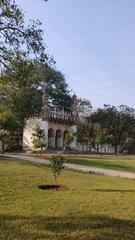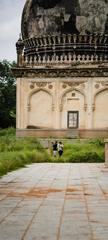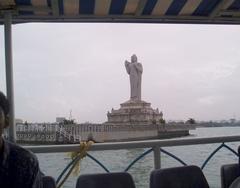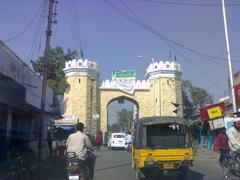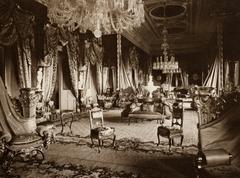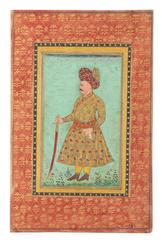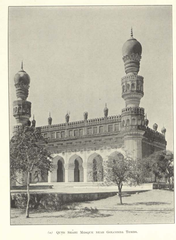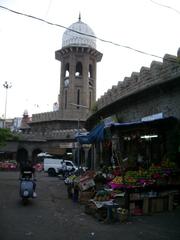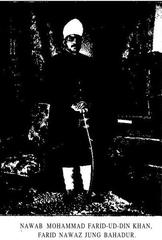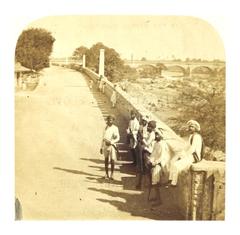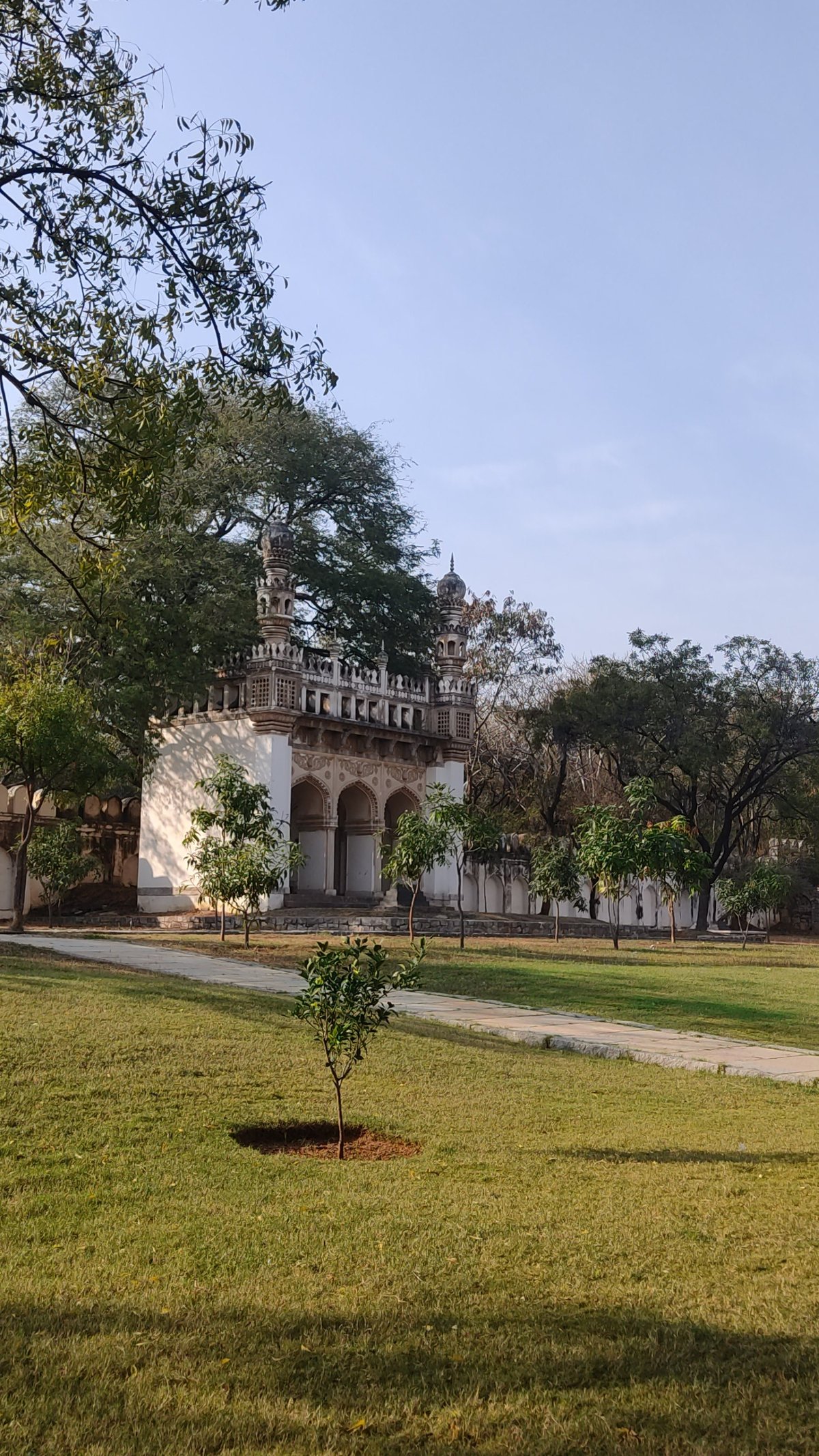
Qutb Shahi Tombs Visiting Hours, Tickets, and Hyderabad Historical Sites Guide
Date: 15/06/2025
Introduction
The Qutb Shahi Tombs are among Hyderabad’s most iconic heritage sites, representing the grandeur and architectural ingenuity of the Deccan Sultanate. Located within the peaceful Ibrahim Bagh, near the historic Golconda Fort, the sprawling necropolis features over 100 structures—including the mausoleums of Qutb Shahi rulers, their families, and eminent courtiers. Built between the 16th and 17th centuries, these monuments blend Persian, Pashtun, and Indian architectural styles, creating a unique Indo-Islamic aesthetic. Restoration projects led by the Aga Khan Trust for Culture and the Telangana State Archaeology Department have revitalized both the tombs and the surrounding Persian-style gardens, making the complex a must-visit for history buffs, architecture lovers, and cultural tourists alike (Hyderabad City; Outlook Traveller; UNESCO Tentative List).
Table of Contents
- Introduction
- Origins and Construction
- Architectural Features and Layout
- Historical Significance and Restoration
- Visitor Information: Hours, Tickets, Accessibility
- Cultural Impact and Legacy
- Nearby Attractions and Suggested Itineraries
- FAQs
- Tips for Visitors
- References
Origins and Construction
The Qutb Shahi Tombs were commissioned by the Qutb Shahi dynasty, which ruled the Golconda Sultanate from 1518 to 1687 CE. Construction was initiated by Sultan Quli Qutb-ul-Mulk, the dynasty’s founder, and continued by his successors. The site functions as the royal necropolis, with mausoleums for the sultans, their families, and key courtiers. Each tomb, constructed from locally quarried granite, is a testament to the dynasty’s patronage of the arts and their appreciation for Persian and Deccani cultural influences.
Architectural Features and Layout
Design Elements:
The tombs are renowned for their harmonious fusion of Persian, Turkish, and Indian architectural motifs—manifested in grand bulbous domes, pointed arches, intricate stucco work, and ornately carved stone screens (jalis). Most tombs are set on raised platforms and topped with domes; larger ones are two-storied while smaller ones are single-storied. Exteriors feature floral and geometric motifs, while interiors were historically adorned with carpets and chandeliers.
Spatial Organization:
The complex is arranged within the Persian-style Ibrahim Bagh, spanning about 108 acres. The garden follows the charbagh (four-part) layout, with pathways lined by bougainvillea and native flora, creating a tranquil setting for visitors (UNESCO Tentative List; Hyderabad City).
Notable Structures:
- Tomb of Sultan Quli Qutb-ul-Mulk: The founder’s tomb, built in 1543, features a large dome and pointed arches.
- Tomb of Muhammad Quli Qutb Shah: The grandest structure in the complex, richly decorated with stucco and calligraphy (Outlook Traveller).
- Mosques and Mortuary Bath: The complex houses two mosques and a rare royal mortuary bath (UNESCO Tentative List).
Historical Significance and Restoration
The Qutb Shahi dynasty’s reign was marked by religious tolerance, urban development (including the founding of Hyderabad), and artistic patronage. After the Mughal conquest in 1687, the tombs suffered neglect and damage, even being used as barracks. Restoration began in the 19th century under Sir Salar Jung III and has continued into the present day, with recent, large-scale conservation led by the Aga Khan Trust for Culture. These efforts have focused on stabilizing structures, reviving tile work, and restoring the gardens, ensuring the tombs remain accessible and historically resonant (Hyderabad City).
Visitor Information: Hours, Tickets, Accessibility
-
Visiting Hours:
Open daily from 9:00 AM to 5:00 PM (some sources note 9:30 AM to 6:00 PM; always check latest timings before visiting). -
Tickets:
Entry fees are approximately INR 25 for Indian citizens, INR 200 for foreign tourists; children under 15 typically enter free. Additional charges may apply for photography. -
Accessibility:
The complex is moderately accessible, with paved pathways and ramps near main tombs. Some uneven terrain exists; assistance is available for differently-abled visitors. -
Guided Tours:
Professional guides and audio tours are available onsite for a deeper historical and architectural understanding. -
Facilities:
Restrooms, drinking water stations, shaded seating, and ample parking are available. Food and large bags are not permitted inside; eateries are nearby (Hyderabad Tourism).
Cultural Impact and Legacy
The Qutb Shahi Tombs have inspired artists, historians, and architects through the centuries. Their distinctive Indo-Islamic style—combining Persian domes, Indian chhatris, and Deccani arches—has influenced later regional architecture. The tombs also serve as a living classroom for students of art, heritage conservation, and Deccan history. Restoration efforts have revived traditional craftsmanship and engaged local communities, ensuring the site’s continued relevance and vibrancy.
Nearby Attractions and Suggested Itineraries
The tombs’ proximity to other major Hyderabad landmarks makes them ideal for inclusion in a heritage tour:
- Golconda Fort: Less than 1 km away, a stunning example of military architecture.
- Charminar: Hyderabad’s most famous monument, about 10 km away.
- Salar Jung Museum: Houses one of the world’s largest collections of art and artifacts.
- Hussain Sagar Lake and Chowmahalla Palace: Both within easy reach by taxi or public transport.
A combined visit to Qutb Shahi Tombs and Golconda Fort offers a comprehensive perspective on Hyderabad’s royal past.
Frequently Asked Questions (FAQs)
Q: What are the Qutb Shahi Tombs visiting hours?
A: Open daily from 9:00 AM to 5:00 PM; verify timings before your visit.
Q: How much are the tickets?
A: INR 25 for Indian citizens, INR 200 for foreigners; children typically free.
Q: Are guided tours available?
A: Yes, on-site guides and audio tours offer expert insights.
Q: Is the site wheelchair accessible?
A: Main pathways and garden areas are accessible; some interiors have limited access.
Q: Is photography allowed?
A: Yes, with a nominal fee. Restrictions may apply to professional equipment.
Q: What other attractions are nearby?
A: Golconda Fort, Charminar, Salar Jung Museum, and more.
Tips for Visitors
- Visit early morning or late afternoon for best lighting and cooler weather.
- Wear comfortable shoes and sun protection.
- Carry water; food is not allowed inside.
- Respect site guidelines and avoid touching or climbing monuments.
- Check for ongoing restoration work that may affect access.
- Utilize guided tours or interpretive signs for a richer experience.
References and Further Reading
- This guide draws upon information and resources from Hyderabad City, Outlook Traveller, Hyderabad Tourism, Official Hyderabad Tourism Page, UNESCO Tentative List, and IMVoyager.
Ready to immerse yourself in Hyderabad’s royal legacy? Download the Audiala app for detailed guides, virtual tours, and real-time updates. Follow us on social media for travel tips and event information. The Qutb Shahi Tombs promise a journey through history, art, and cultural synthesis—plan your visit today!
